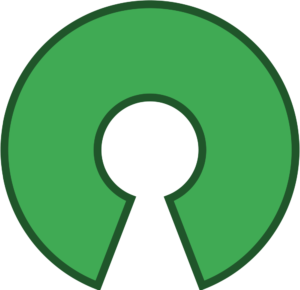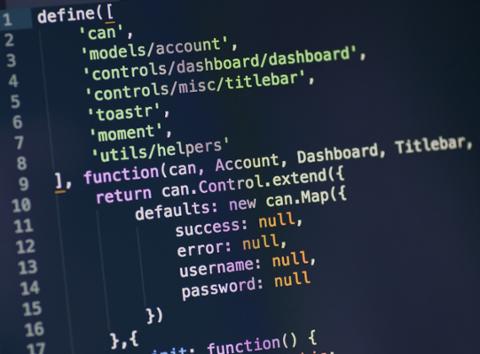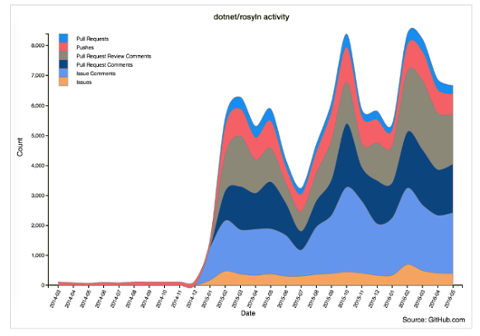 For women, a lack of open source experience can have real consequences by putting a serious damper on professional growth. Several organizations are working to get more women involved in open source, including the Ada Initiative, the GNOME Project’s Outreach Program for Women, OpenHatch and Women in Drupal. Two industry stalwarts that are also reaching out are the Linux Foundation and Red Hat. Click here to find open source-related jobs. The Linux Foundation is participating in GNOME’s OPW by sponsoring kernel internships. In addition to learning how to build and submit kernel patches, the interns--who are also mentored--make significant contributions to the Linux kernel itself. Amanda McPherson, the Linux Foundation’s chief marketing officer, sees the greater inclusion of women as a benefit to all. “Open source projects, just like all software projects, need continual injections of talent to stay competitive,” she says. “Obviously you want to attract women to open source to get the most talent in that space. There is value in having different perspectives of all kinds in a project. That’s how innovation happens.”
For women, a lack of open source experience can have real consequences by putting a serious damper on professional growth. Several organizations are working to get more women involved in open source, including the Ada Initiative, the GNOME Project’s Outreach Program for Women, OpenHatch and Women in Drupal. Two industry stalwarts that are also reaching out are the Linux Foundation and Red Hat. Click here to find open source-related jobs. The Linux Foundation is participating in GNOME’s OPW by sponsoring kernel internships. In addition to learning how to build and submit kernel patches, the interns--who are also mentored--make significant contributions to the Linux kernel itself. Amanda McPherson, the Linux Foundation’s chief marketing officer, sees the greater inclusion of women as a benefit to all. “Open source projects, just like all software projects, need continual injections of talent to stay competitive,” she says. “Obviously you want to attract women to open source to get the most talent in that space. There is value in having different perspectives of all kinds in a project. That’s how innovation happens.”
Women Have a Long Way to Go in Open Source
Despite being a leading force for innovation in the software world, the open source movement lags even behind the rest of technology when it comes to diversity. The percentage of open source contributors who are women is estimated to be as low as 1.5 percent. The 2013 FLOSS survey by GSyc/LibreSoft paints a more promising picture, putting the number at 11 percent. Either way, the gender imbalance is grossly disproportionate.  For women, a lack of open source experience can have real consequences by putting a serious damper on professional growth. Several organizations are working to get more women involved in open source, including the Ada Initiative, the GNOME Project’s Outreach Program for Women, OpenHatch and Women in Drupal. Two industry stalwarts that are also reaching out are the Linux Foundation and Red Hat. Click here to find open source-related jobs. The Linux Foundation is participating in GNOME’s OPW by sponsoring kernel internships. In addition to learning how to build and submit kernel patches, the interns--who are also mentored--make significant contributions to the Linux kernel itself. Amanda McPherson, the Linux Foundation’s chief marketing officer, sees the greater inclusion of women as a benefit to all. “Open source projects, just like all software projects, need continual injections of talent to stay competitive,” she says. “Obviously you want to attract women to open source to get the most talent in that space. There is value in having different perspectives of all kinds in a project. That’s how innovation happens.”
For women, a lack of open source experience can have real consequences by putting a serious damper on professional growth. Several organizations are working to get more women involved in open source, including the Ada Initiative, the GNOME Project’s Outreach Program for Women, OpenHatch and Women in Drupal. Two industry stalwarts that are also reaching out are the Linux Foundation and Red Hat. Click here to find open source-related jobs. The Linux Foundation is participating in GNOME’s OPW by sponsoring kernel internships. In addition to learning how to build and submit kernel patches, the interns--who are also mentored--make significant contributions to the Linux kernel itself. Amanda McPherson, the Linux Foundation’s chief marketing officer, sees the greater inclusion of women as a benefit to all. “Open source projects, just like all software projects, need continual injections of talent to stay competitive,” she says. “Obviously you want to attract women to open source to get the most talent in that space. There is value in having different perspectives of all kinds in a project. That’s how innovation happens.”
 For women, a lack of open source experience can have real consequences by putting a serious damper on professional growth. Several organizations are working to get more women involved in open source, including the Ada Initiative, the GNOME Project’s Outreach Program for Women, OpenHatch and Women in Drupal. Two industry stalwarts that are also reaching out are the Linux Foundation and Red Hat. Click here to find open source-related jobs. The Linux Foundation is participating in GNOME’s OPW by sponsoring kernel internships. In addition to learning how to build and submit kernel patches, the interns--who are also mentored--make significant contributions to the Linux kernel itself. Amanda McPherson, the Linux Foundation’s chief marketing officer, sees the greater inclusion of women as a benefit to all. “Open source projects, just like all software projects, need continual injections of talent to stay competitive,” she says. “Obviously you want to attract women to open source to get the most talent in that space. There is value in having different perspectives of all kinds in a project. That’s how innovation happens.”
For women, a lack of open source experience can have real consequences by putting a serious damper on professional growth. Several organizations are working to get more women involved in open source, including the Ada Initiative, the GNOME Project’s Outreach Program for Women, OpenHatch and Women in Drupal. Two industry stalwarts that are also reaching out are the Linux Foundation and Red Hat. Click here to find open source-related jobs. The Linux Foundation is participating in GNOME’s OPW by sponsoring kernel internships. In addition to learning how to build and submit kernel patches, the interns--who are also mentored--make significant contributions to the Linux kernel itself. Amanda McPherson, the Linux Foundation’s chief marketing officer, sees the greater inclusion of women as a benefit to all. “Open source projects, just like all software projects, need continual injections of talent to stay competitive,” she says. “Obviously you want to attract women to open source to get the most talent in that space. There is value in having different perspectives of all kinds in a project. That’s how innovation happens.”



